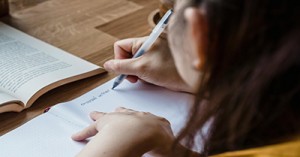A: An anecdotal record is a type of observational documentation used in education, early childhood development, and research to capture significant moments or behaviors of an individual in a natural setting. It is a brief, narrative account that describes what was observed, without interpretation or analysis.
How To Write Anecdotal Records
Writing effective anecdotal records requires clarity, objectivity, and attention to detail. Here are some key tips to enhance your observations:
-
Be Objective & Descriptive – Focus on facts rather than interpretations. Describe exactly what you see and hear without assumptions.
-
Use Present Tense – Writing in the present tense makes the observation feel immediate and vivid.
-
Include Context – Note the setting, time, and individuals involved to provide a complete picture.
-
Capture Key Details – Highlight significant behaviors, interactions, or developmental milestones.
-
Keep It Concise – Anecdotal records should be brief yet informative, avoiding unnecessary details.
-
Use Direct Quotes – If possible, include exact words spoken by the child to provide authenticity.
-
Avoid Labels – Instead of saying "The child is shy," describe behaviors like "The child stood behind a chair and avoided eye contact."
-
Organize Notes Regularly – Review and categorize observations to track patterns over time.
Sample
Date: April 27, 2025 Child's Name: Aarav (4 years old) Setting: Indoor play area
Observation: Aarav was sitting at the art table, carefully selecting different colored crayons. He picked up a blue crayon and began drawing a series of circles on his paper. As he worked, he looked up at his friend and said, “I’m making a big ocean!” His friend nodded and started drawing waves next to Aarav’s circles. Aarav smiled and continued adding details, occasionally explaining his drawing aloud.
Summary: This observation highlights Aarav’s creativity and ability to express ideas through art. It also demonstrates his social engagement, as he collaborated with a peer to expand his drawing concept. His verbal communication and enthusiasm suggest confidence in sharing his thoughts.
Linking to the EYLF:
-
Outcome 1: Children have a strong sense of identity
-
Aarav confidently expresses his ideas through art, demonstrating autonomy and creativity.
-
His interaction with a peer shows his ability to engage in collaborative play.
-
-
Outcome 2: Children connect with and contribute to their world
-
Aarav’s ocean drawing reflects his understanding of nature and the environment.
-
His willingness to share his ideas encourages social participation.
-
-
Outcome 4: Children are confident and involved learners
-
Aarav demonstrates curiosity and enthusiasm in his creative process.
-
He uses problem-solving skills to decide colors and shapes for his drawing.
-
-
Outcome 5: Children are effective communicators
-
Aarav verbally expresses his thoughts, using language to describe his artwork.
-
His conversation with a peer shows his ability to engage in meaningful dialogue.
-
Extension Ideas
-
Introduce different art mediums like watercolor, clay, or collage to expand his creativity.
-
Encourage him to create a storybook based on his ocean drawing, adding characters and a narrative.
-
Encourage Aarav to present his artwork to peers, explaining his creative process.
-
Organise a collaborative mural where children contribute to a large ocean-themed artwork.
Further Reading
Different Types Of Observation Methods
Observations in Childcare
Anecdotal Records In Childcare







 Here is the list of the EYLF Learning Outcomes that you can use as a guide or reference for your documentation and planning. The EYLF
Here is the list of the EYLF Learning Outcomes that you can use as a guide or reference for your documentation and planning. The EYLF The EYLF is a guide which consists of Principles, Practices and 5 main Learning Outcomes along with each of their sub outcomes, based on identity,
The EYLF is a guide which consists of Principles, Practices and 5 main Learning Outcomes along with each of their sub outcomes, based on identity, This is a guide on How to Write a Learning Story. It provides information on What Is A Learning Story, Writing A Learning Story, Sample
This is a guide on How to Write a Learning Story. It provides information on What Is A Learning Story, Writing A Learning Story, Sample One of the most important types of documentation methods that educators needs to be familiar with are “observations”. Observations are crucial for all early childhood
One of the most important types of documentation methods that educators needs to be familiar with are “observations”. Observations are crucial for all early childhood To support children achieve learning outcomes from the EYLF Framework, the following list gives educators examples of how to promote children's learning in each individual
To support children achieve learning outcomes from the EYLF Framework, the following list gives educators examples of how to promote children's learning in each individual Reflective practice is learning from everyday situations and issues and concerns that arise which form part of our daily routine while working in an early
Reflective practice is learning from everyday situations and issues and concerns that arise which form part of our daily routine while working in an early Within Australia, Programming and Planning is reflected and supported by the Early Years Learning Framework. Educators within early childhood settings, use the EYLF to guide
Within Australia, Programming and Planning is reflected and supported by the Early Years Learning Framework. Educators within early childhood settings, use the EYLF to guide When observing children, it's important that we use a range of different observation methods from running records, learning stories to photographs and work samples. Using
When observing children, it's important that we use a range of different observation methods from running records, learning stories to photographs and work samples. Using This is a guide for educators on what to observe under each sub learning outcome from the EYLF Framework, when a child is engaged in
This is a guide for educators on what to observe under each sub learning outcome from the EYLF Framework, when a child is engaged in The Early Years Learning Framework describes the curriculum as “all the interactions, experiences, activities, routines and events, planned and unplanned, that occur in an environment
The Early Years Learning Framework describes the curriculum as “all the interactions, experiences, activities, routines and events, planned and unplanned, that occur in an environment


